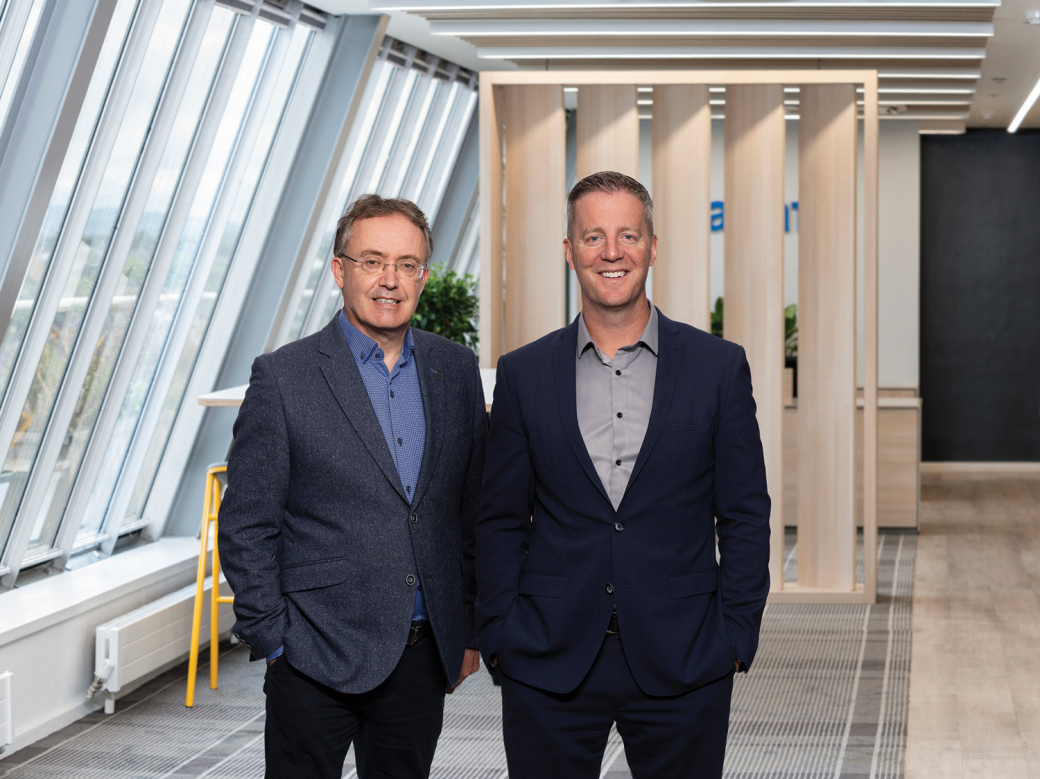The following is an extract from a recent Business Post special supplement on Galway which featured commentary from partners Austin Sammon and Paul Mee from our Galway office.
The jewel in Galway’s crown is the medtech and life sciences sector. With over 11,000 people employed in the medtech space, Galway is punching above its weight and has embraced its position as such, said Austin Sammon, an audit and advisory partner at Mazars in Galway who represents Ireland as part of Mazars’ global board in life sciences and pharmaceuticals.
“The city has embraced it, and the universities get behind it,” he said. “You go into the University of Galway or ATU, and they have designed courses to ensure that talent keeps coming through. That isn’t something you can pick up and move elsewhere, and that’s why the whole ecosystem backs the drive in supporting life sciences and pharmaceutical.”
Knowing that advisers like Mazars, one of the leading firms in international audit, tax, financial advisory, outsourcing and consulting, are on the ground is of great comfort to multinational companies looking to invest into the region. When planning their next step, they can assess the lie of the land first and make more informed decisions.
Paul Mee and Austin Sammon, Partners at Mazars Galway Office
“They can now get the full support here,” said Sammon. “If a company is in the States and they’re looking at Galway, suddenly they have the access to people and to structure, which is hugely important. From the education system to the ecosystem, openness to manufacturing, research and development (R&D), start-ups, they’re all valuable, but all of that combined is the reason Galway is in the position it’s in.”
That mix of companies in the region allows a great deal of resilience for the life sciences and medtech sector, which showed how robust and flexible they were during Covid-19. Also, the development of purpose-built office space in areas like Bonham Quay is a testament to Galway being an attractive place for larger FDI-type companies, said Paul Mee, tax partner at Mazars.
“There are two business innovation centres hubs in the University of Galway and ATU which are spinning out fantastic ideas,” he said. “There have been quite a few start-ups from people who have left one of the large life science or medical companies to set up their own business to create a new medical product that would be an improvement on what’s on the market.
“Quite a few of those have been extraordinarily successful getting their product to a point where it can be purchased by another entity and being serial entrepreneurs; [then] they move onto the next one.”
A significant benefit for SMEs came from the recent Budget 2024 announcement, with an increase in the R&D tax credit rate from 25% to 30%. It will alleviate some of the risks involved when engaging in R&D development.
More importantly, the year one refundable R&D tax credit is increasing from €25,000 to €50,000, providing companies with an immediate cash-flow benefit.
“Changing the R&D tax rate is a testament to how huge a success it is in being a net contributor to the economy,” he said. “In that, it’s driving a lot of activity; you have companies servicing their R&D activities. Moving to 30% is a very important marker that the government has laid down.”
This aims to create a more robust and sustainable R&D industry, especially for SMEs. Increasing the tax credit to €50,000 is a game changer for many small companies, giving them more leeway to pursue research.
“The change is very much pitched towards the smaller companies,” he said. “Getting that €50,000 is going to be very important as it doesn’t matter if your R&D expenditure comes to nothing. The key criteria is that you have a scientific or technical uncertainty you cannot resolve when you start your project. If you can resolve it, it will result in an improvement, be it a new product or a better way of manufacturing.”
The crucial part is that the R&D tax credit isn’t tied to success. If a company spends time on it and realises that it’s not feasible, you still get the R&D tax credit.
The tax credit represents the ability to take the leap and push towards achieving new levels of creativity in a diverse and ever-evolving sector. The most recent stats from the CSO show that R&D development expenditure in 2021 was at €3.88bn, with 2022 expected to be the same.
This shows how significant the industry is to Ireland’s fortunes. With its clusters of educational, economic and industrial organisations, Galway is well-placed to make the most of these opportunities. “That shows the amount of money that is being spent by Irish businesses on R&D,” he said. “The tax credits are really saying to create the jobs, have the bravery to spend the money on R&D.”







